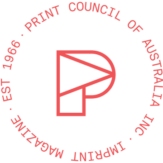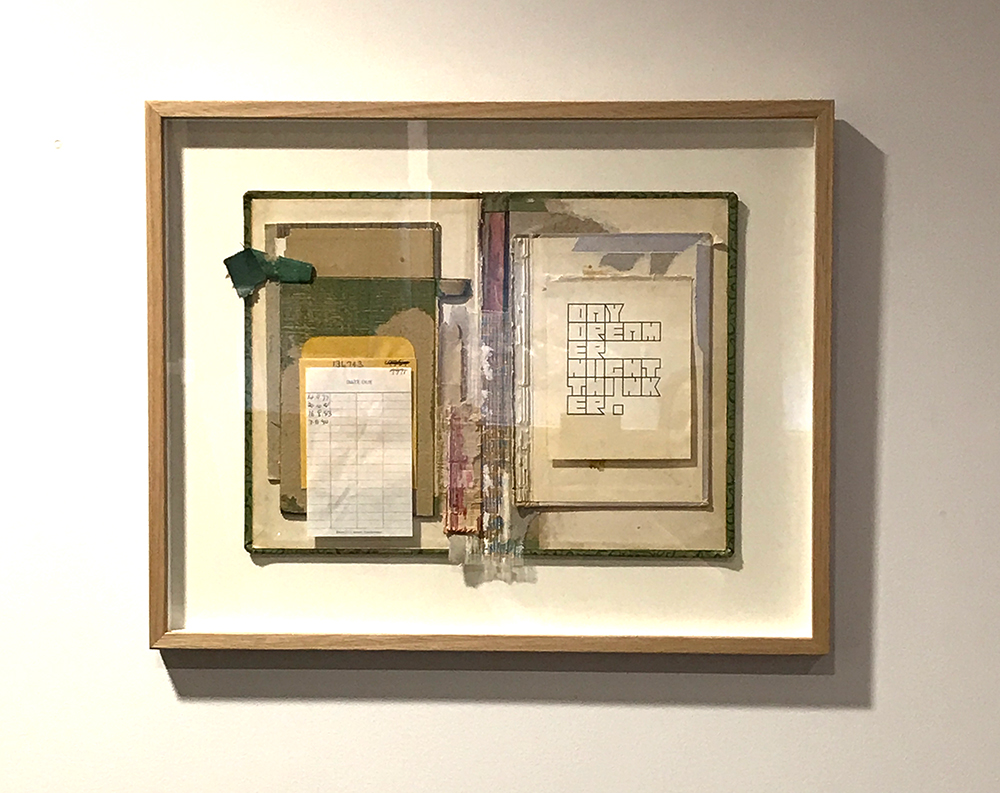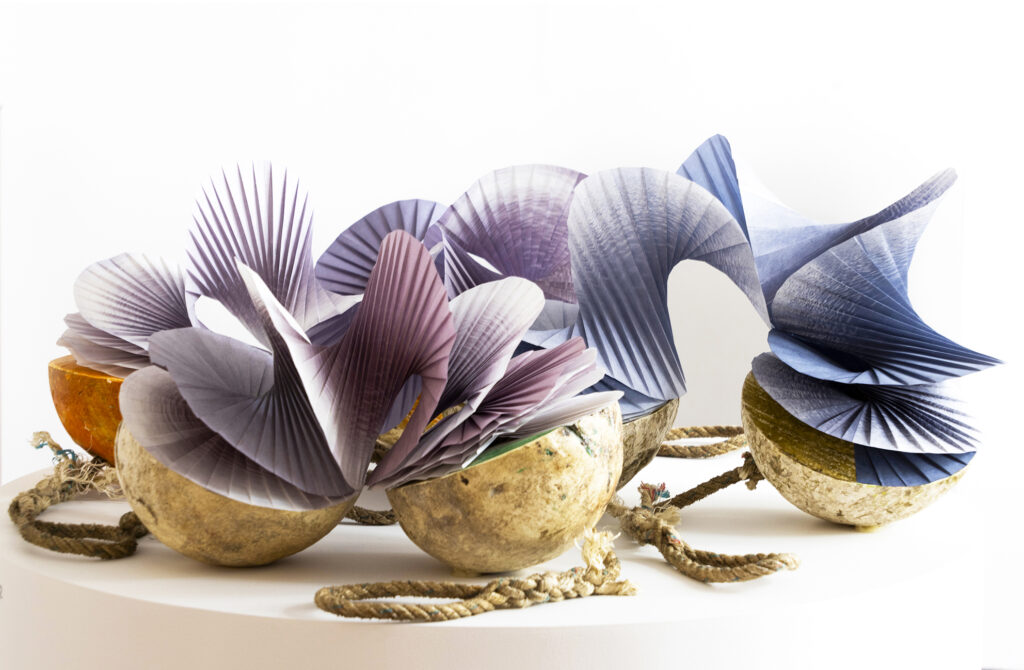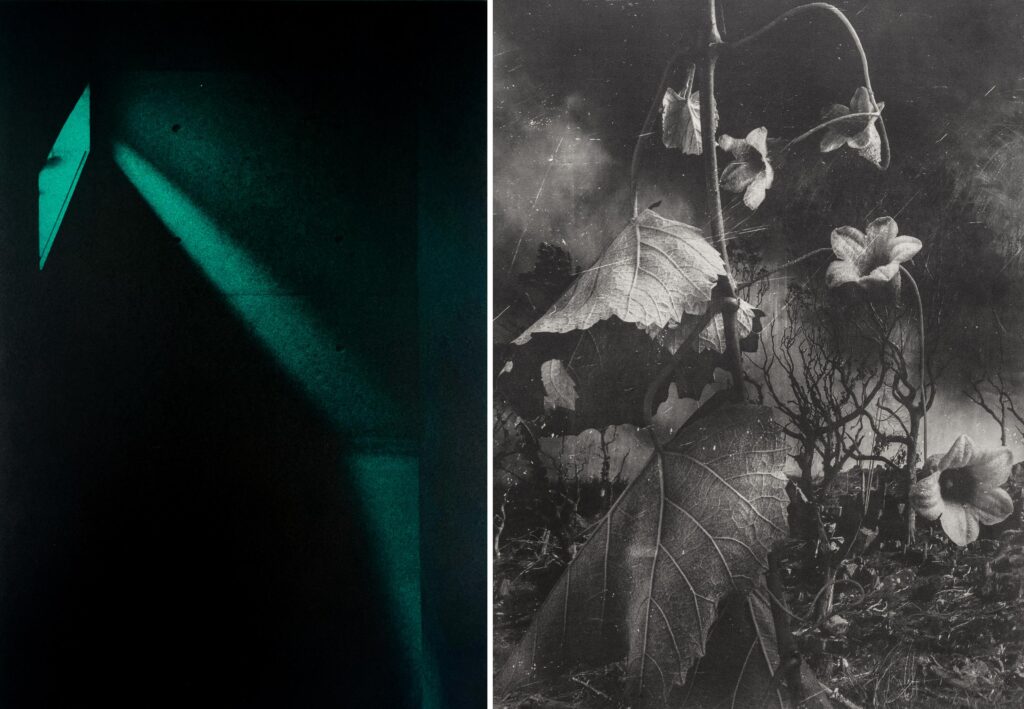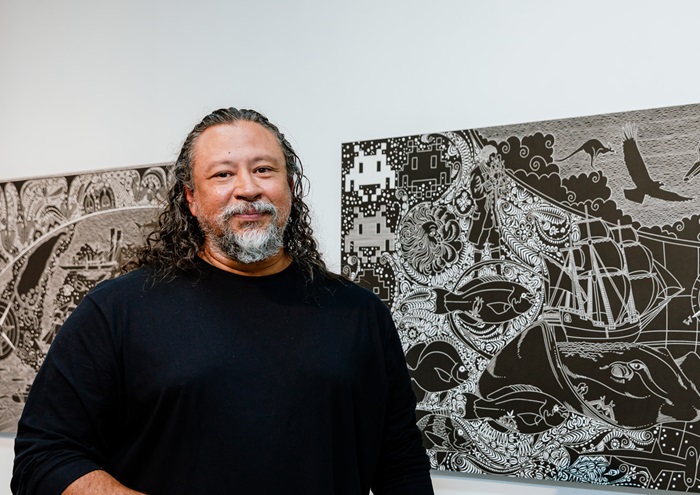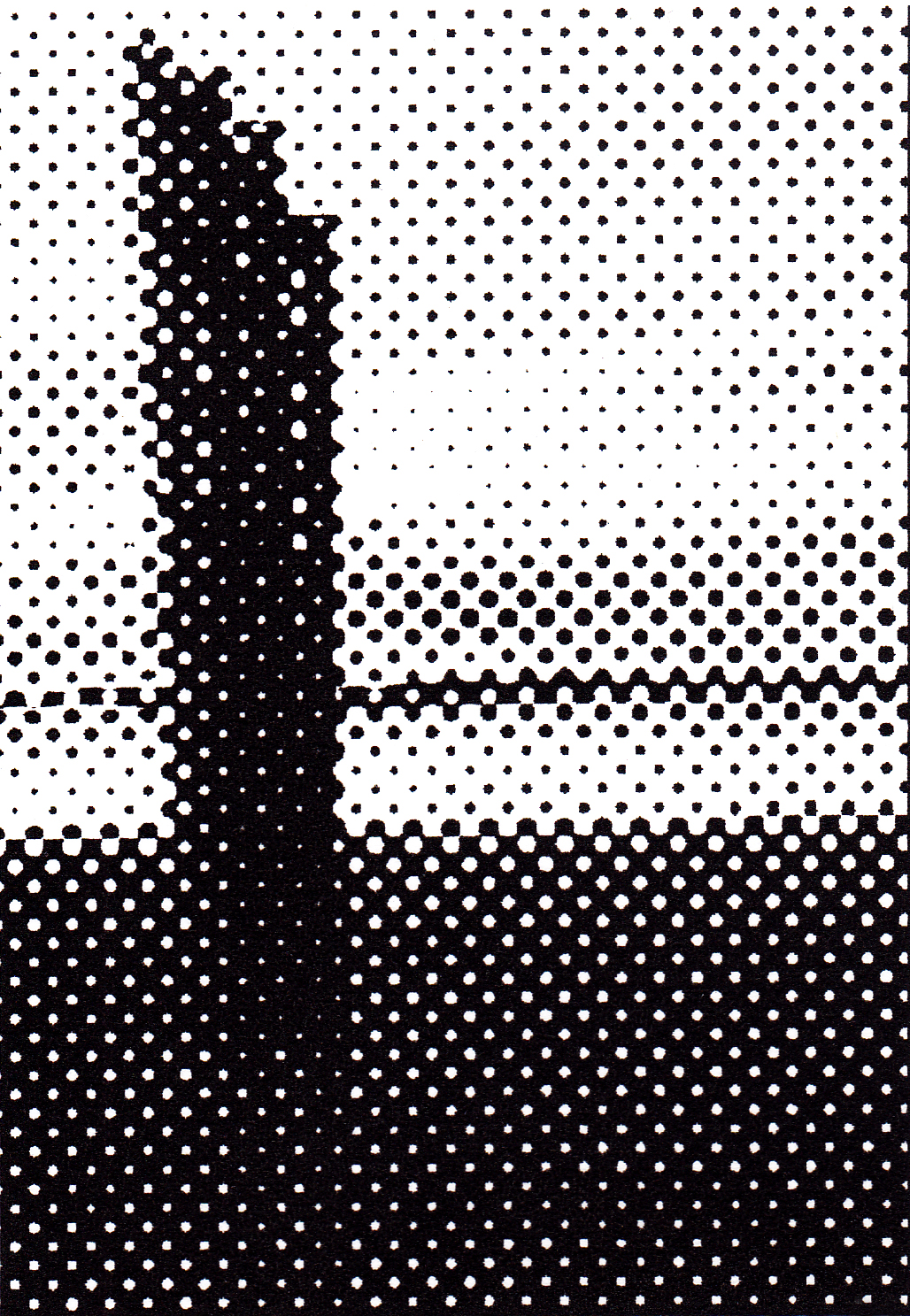
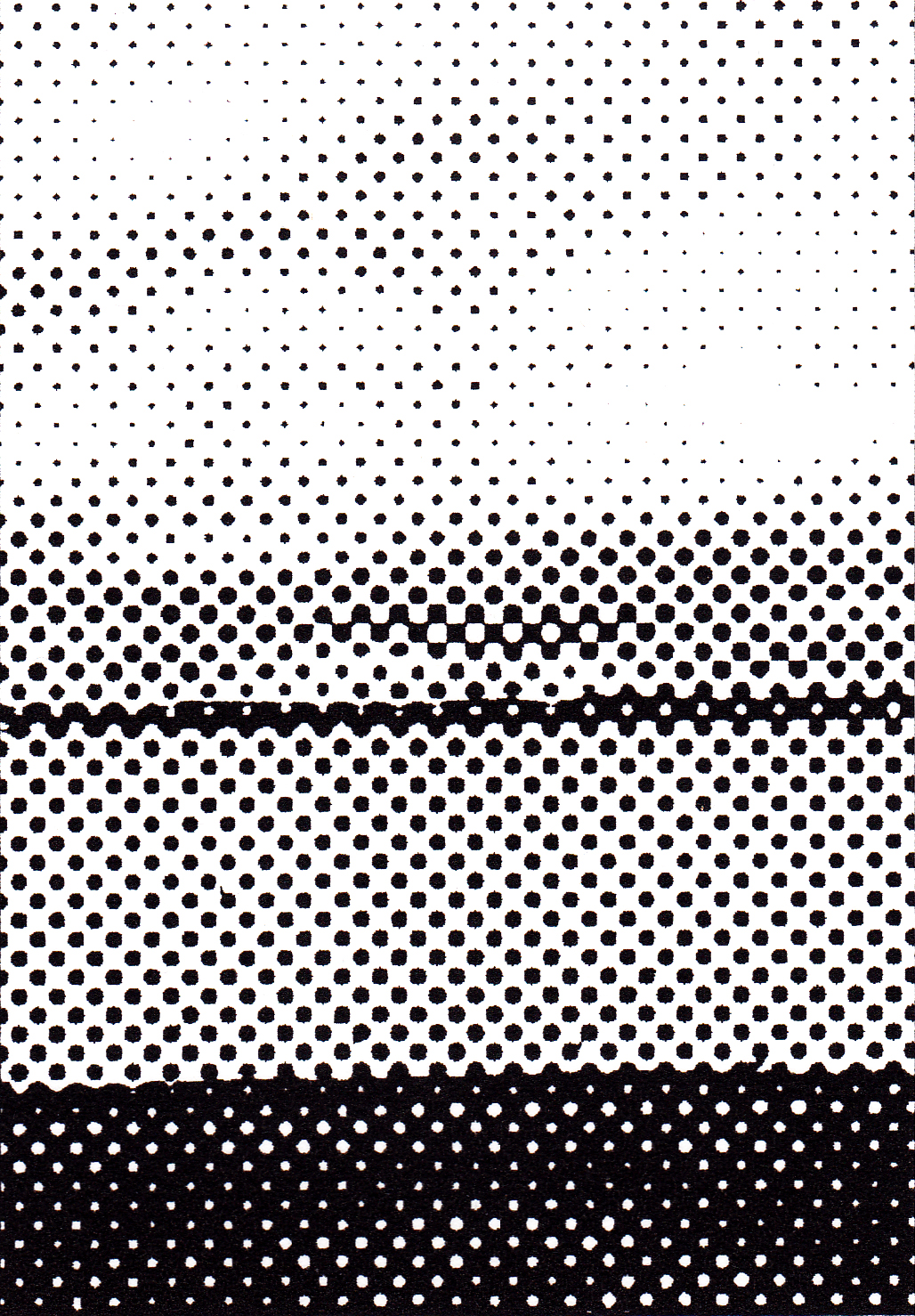
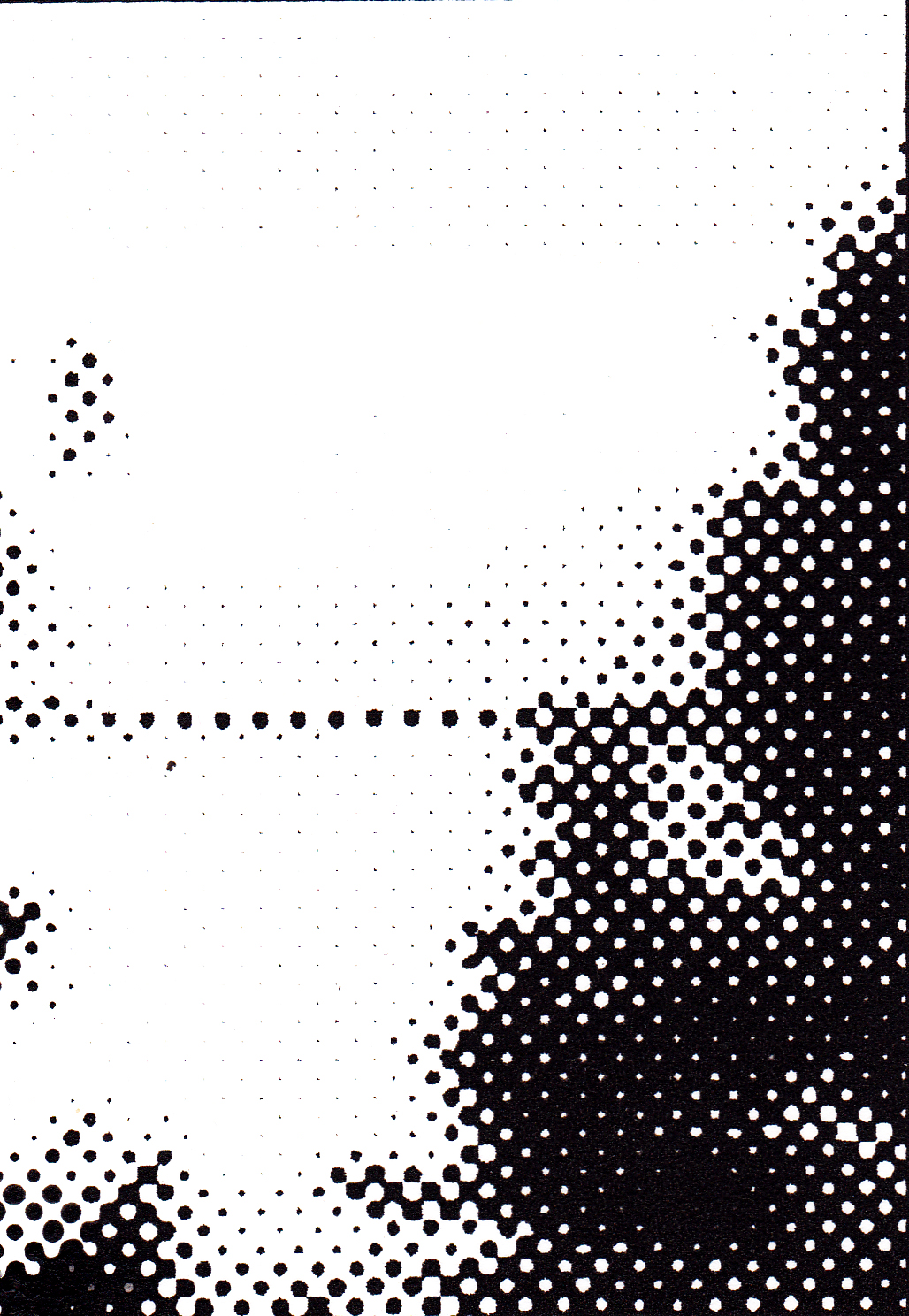
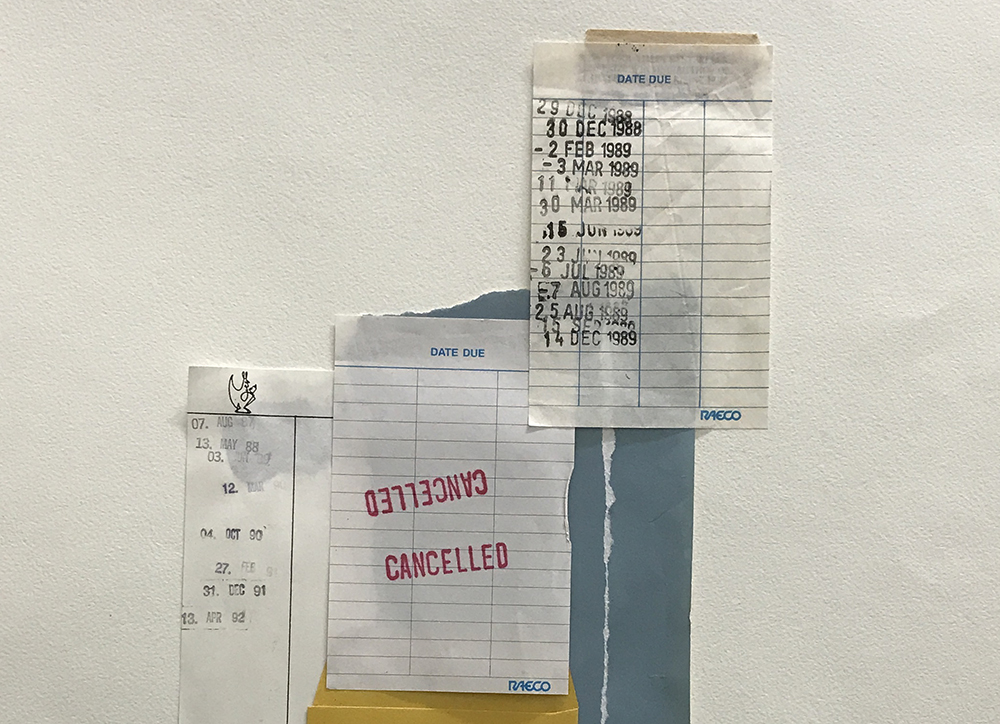
From top:
Saskia Haalebos:
Self/your/our portrait (dreamer / thinker), 2023, collaged old books, found library due date slip and envelope, Japanese rice paste, double-sided tape, screenprint on end paper using The Bumfont, 28 x 39 cm
The Filling and Disappearing (frame 183), 2023, screenprint as screenshot, 12.6 x 8.7 cm
The Filling and Disappearing (frame 289), 2023, screenprint as screenshot, 12.6 x 8.7 cm
The Filling and Disappearing (frame 324), 2023, screenprint as screenshot, 12.6 x 8.7 cm
Permanent Ephemera II (unknown printmaker series) (detail), 2023, found library due date slips, found library card pocket, book page, dimensions variable, paper size 52 x 39 cm
All images © the artist.
Q: What were some of the foundation ideas for this exhibition project?
A: This one’s been in the works for a while, and with multiple parts. A couple of days after my Nan and I had our last birthday together in 2022, I flew to Tassie for a residency with The Unconformity in Tassie’s west. I was supposed to go six months earlier, but the ACT went into lockdown the day before I was leaving, so by the time I got there, I was tired, disillusioned and had decided this was one of the last ‘art things’ I’d do. Classic Gen X. However, in an old church hall that was my studio space for two weeks, I wrote four tiny words on bits of card and photographed them on the floor: Day Dreamer Night Thinker. It was my defibrillator.
After that residency, I went straight into one with Megalo Print Studio. Revitalised and without the pressure of outcomes, I spent four glorious weeks making monoprints using my bodyweight as the press, redacting pages of my mate’s novel to make mini-scripts, screenprinting micro-poetry using a font I’d made 20 years earlier, making excess prints into zines, drinking tea with the lovely staff and getting a Wordle addiction. It was a productive and restorative time.
What loomed large – and embedded in all the making – was ‘expected grief’. My birthday buddy, confidant and safe house, Nan, was 100, had dementia and I was beside myself.
Q: How did the artwork selection take place?
A: A month after Nan died, I commuted to Sydney each week to teach Book Arts at the National Art School. North of Canberra there’s an endorheic lake; and in deep winter it was full, silver and beautiful. I took a time-lapse video of it from the bus window and left it in my subconscious. This ended up as an animation, but more on that below.
Being at NAS among the 18-23 year olds was life affirming. I loved it and I loved them—it was like coming up for air. Lecturing also made me focus on bookmaking again. Not fancy, perfectly bound objects, but ones that use whatever’s to hand to create authentic stories. This meant trips to the Lifeline Book Fairs, op shops and other dusty places to collect things from times past that could be repurposed to communicate what I didn’t really know was on my mind—that we are all ephemera.
In the end, I just made work that I needed to; and because I used to be a graphic designer working to a brief, I simply made the right amount of work to fit the space.
Q: How does the exhibition manifest – what do visitors experience?
A: In her exhibition essay, Dr Caren Florance describes it as museum-like, which is (unsurprisingly) a great observation. There’s a sense of containment and scientific detachment. I guess this was a way to create without getting too overwhelmed with the subject matter AND to let visitor’s think about mortality without causing a full blown existential dilemma [fingers crossed emoji].
In a corner, small objects sit under Perpsex: And – an unbound book that’s a random poetry generator; Denial – a drypoint etching in a key ring with Nan’s houses keys; SOUNDSCAPES vol.3 – a small notebook with handwritten details of noises overhead, overlooked and spent.
There are collaged works on paper of library cards, book ephemera and return date stamps from decades ago (aka the unknown printmaker series).
Contained in frames are old books pulled apart and their covers and binding materials assembled as structures to hold bookplate-sized screenprints on end papers of micro-poetry about universal loss.
And there’s more.
I’m hoping visitor’s take the time to read and to feel and to contemplate. Perhaps get on with ‘the thing’ or ‘the talk’ they’ve been putting off.
Q: What are some of the key works and what subject matter do they deal with?
A: The show’s themes are big and at times banal. It’s about grief and time passing and tiny moments that make up life—like the interaction when borrowing a library book. Perhaps this doesn’t sound like a fun show, but it is (I hope) quiet and gentle.
The main work, The Filling and Disappearing, is an animation made from hundreds of screenprints. While it’s of a lake, it’s not about landscape. As the title suggests, it’s about love and loss. Alongside the animation, all of the frames are displayed in old photo album sleeves.
But Caren says it best, ‘Don’t be distracted by the spectacle of the animated minute she presents to you, there’s much more to it. Each video frame has been painstakingly separated out, bitmapped for dot screen, transferred to the silk screen, printed once, scanned, and reassembled into light. For me, this attention to detail, these hours of effort, evokes someone gently washing every small surface of a corpse, an exquisite expression of love and care and respect. For Saskia it was a manifestation of the fear of her memories dispersing and disappearing, echoing Nan’s slow decline over the last five years.’
Q: What is it about the printmaking experience that you most appreciate?
A: I love many things about printmaking, mostly the egalitarian nature that can exist i.e. you don’t need expensive equipment or years of training to make something great. I prefer to see a brilliant idea made roughly than a technically refined work with little soul. But I guess it’s about what you want from art. Do you want decoration or revolution?
—
Day Dreamer/ Night Thinker is at Megalo Print Studio and Gallery until 2 September www.megalo.org
Opening: Wednesday 12 July, 5-7pm
Artist talk: Saturday 5 August, 11am-12pm
—
Join the PCA and become a member. You’ll get the fine-art quarterly print magazine Imprint, free promotion of your exhibitions, discounts on art materials and a range of other exclusive benefits.
